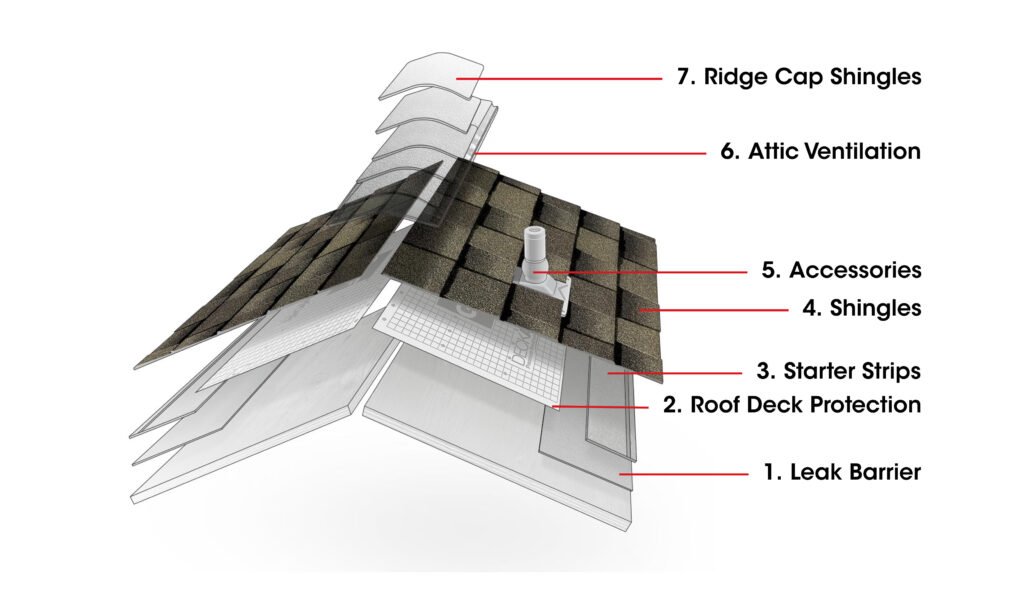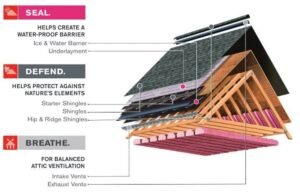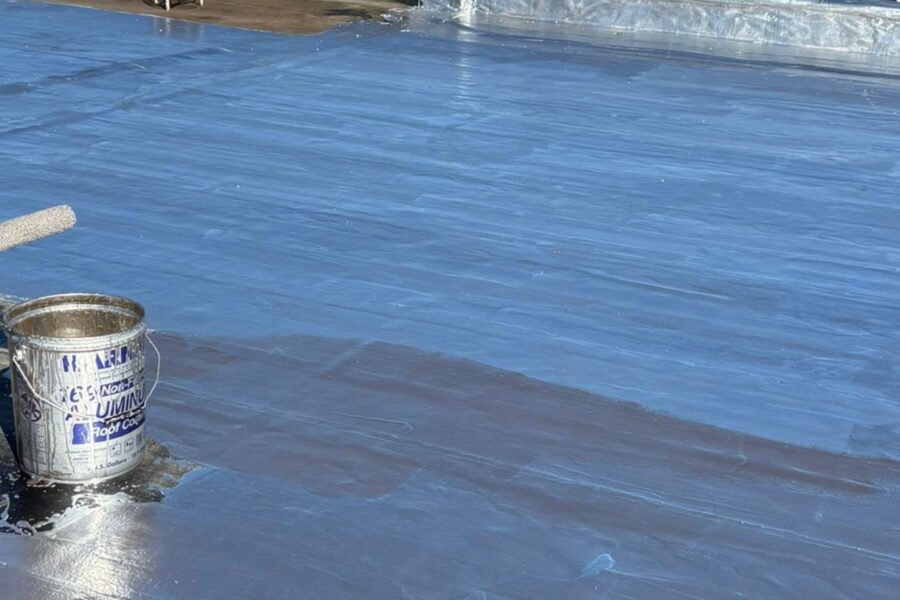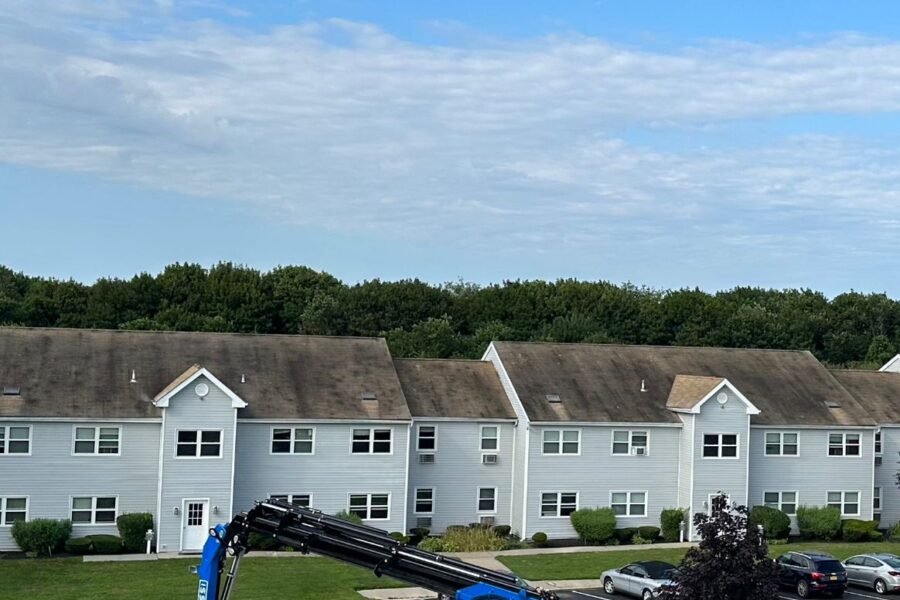What’s Your Roof Made Of?
So, imagine that you’re a homeowner who knows nothing about the roof above their head. Why is that? You deserve the knowledge about everything related to your biggest investment. Today, let’s discuss one of the simplest things, yet the most important: What is your roof made of?
Plywood/OSB Board: Roof Decking
Over the trusses or rafters of your home, plywood or OSB board will be nailed down. The trusses are the wooden beams in your attic that meet each other at the top. Now, what’s the point of plywood or OSB board on the roof? Plywood is the best, but they both can serve as the base for the roofing system. Every single component goes over the plywood, like the shingles, underlayment and so on. Here in New York, OSB cannot be used on the roofs, so we’ll never install it on your roof. Also, we personally never recommend OSB.
 OSB Board
OSB Board
OSB board is a type of “wood” board made up of wood chunks and glue. We truly don’t recommend this material ever here on Long Island, but there’s some benefits. This board is much cheaper than plywood. OSB board is similar to plywood, but is not to code anymore due to how it performs here on Long Island or in the North East. OSB board can be good in drier climates because it takes longer to become saturated from water. In turn, it also take longer to dry. 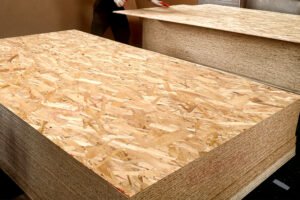
Roofing Underlayment
Next, one of the most important parts for keeping water out: the underlayment. We use synthetic underlayment, and it is what goes over the plywood. Now, before we get ahead of ourselves, everything we talk about here will be based on what’s best for asphalt shingles. Synthetic underlayment is what we use for asphalt shingles, and there are different synthetic underlayment for each roofing types, like flat roofing and metal roofing. For metal roofing, an underlayment like sharkskin is the most popular choice.
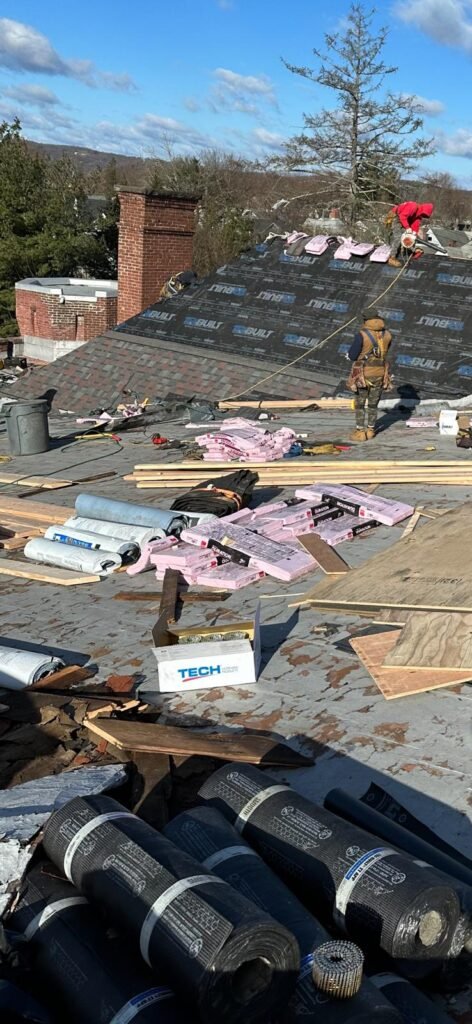
The black part that says “Tribuilt” is the roofing underlayment
What Does Roofing Underlayment Do?
Synthetic roofing underlayment keeps water out and off the plywood, preventing leaks. The reason we use synthetic underlayment instead of felt underlayment is because felt underlayment often rips in high winds. Synthetic underlayment has never given us or any homeowners a problem. We can assure you that homeowners and contractors like ourselves love synthetic underlayment!
Ice and Water Shield
This material has an adhesive backing that sticks directly to the roof deck, creating a watertight seal without the need for additional fasteners. We put ice & water shield on a few main areas; eaves, rakes, valleys and overhangs. This is because these areas are vulnerable, and are often high-traffic areas for water runoff, snow and ice. Ice and Water shield is an essential part of a modern day roofing system for a few reasons:
- Leak Prevention. Due to its self-adhesive nature, there is a 0% chance this will leak with the proper installation. It is also incredibly flexible, meaning that even in heavy rain, bitter frost or heat, it won’t let water in.
- Peace Of Mind. Lack of Ice & Water shield is one of the biggest reasons why roofs need replacements, as it wasn’t very popular 30+ years ago. Most asphalt shingle roofs need to be replaced after 30 years. Once your new roof is equipped with the technology of today, you won’t have to worry about rain snow or ice again!
- Local Building Code. Due to how ice damming can lead to terrible accidents, it has become code to install ice & water shield on all new roofs. There are zero downsides to putting Ice & Water shield on your roof, and we will never install a roof without it.
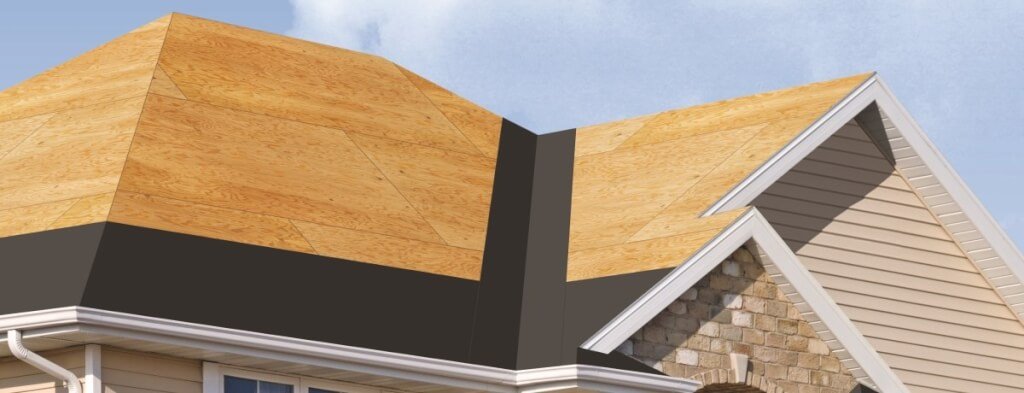
Ice and Water Shield
Roof Flashing
Roof flashing is critical to prevent leaks from certain areas. Flashing creates a watertight seal around roof penetrations, such as chimneys, vents, and skylights, preventing water from seeping into the roof structure and causing leaks.
Drip Edge
Drip Edge is a small piece of bent metal we use to protect the roof’s underlying structure, and ensure proper water drainage. It mainly serves to direct water away from the fascia and into the gutters.
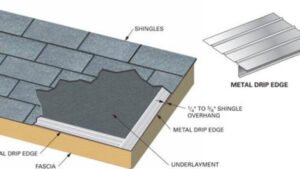
Drip Edge
Shingles
Asphalt shingles, our favorite. Shingles are what go over the plywood & underlayment. They keep your roof protected from the elements for a lifetime, and boost the curb-appeal of your home. We love to install GAF and Owen’s Corning Architectural Shingles. They are beautiful, last for a minimum of 30 years with proper installation, and are the most cost-effective option.
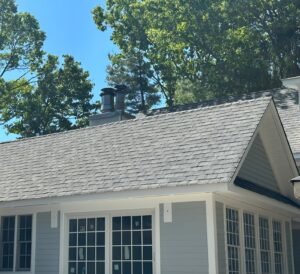
Camelot II Luxury Shingles
Flat-Roofing Membranes
Flat roofing is completely different than shingle roofing systems. Flat roofing is installed on roofs with a “flat” slope or low-slope. To learn more about flat roofing or commercial roofing, read our commercial roofing service pages. We are the best commercial roofing company on Long Island, and are proud to serve here.
Accessories
You might be asking, what are roofing accessories and why would I want to spend more money? Roofing accessories are parts like pipe boots, power fans, and gable vents. These are the most common and beneficial, but accessories are also things like snow guards. However, there are three main accessories you need on your residential roof.
- Pipe Boots. There are often skinny and small vent pipes coming out of your roof. These are often for plumbing. The boot is what goes underneath the pipe, and is made up of rubber and metal. It serves as a flashing, as it protects another vulnerable area from leaks.
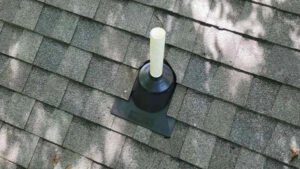
Pipe Boot
- Power Fans. What is the purpose of a roof power vent? The purpose is to allow for proper attic ventilation. Roof ventilation allows air to flow through the attic space, escaping through the roof vents. Properly installed roof vents will prevent the roof from overheating.
- Gable Vents. Again, the purpose of these vents are to regulate air circulation in the attic. They can come in many different shapes, but all serve the same purpose.

Gable Vent
Ridge Vent
Ridge vent is also a “roofing accessory” that allows for better ventilation, but goes directly over the ridge (where two roofs meet). We use a rolled out materials, that gets rolled out directly on the ridge. It gets nailed down with ridge caps. They are extremely popular because they’re sleek, and aren’t easy to notice unless you know what they are.
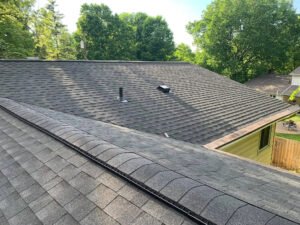
Ridge Vent
Ridge Caps
Finally, we have ridge caps. These are the last shingles we use to cover the ridge and ridge vent. They tie everything in perfectly on your roof, and seal the roof off. These caps offer great protection against the elements. Also, incase they are blown off due to high winds or the elements, they’re readily available and easy to install!
Conclusion
There are many parts that are overlooked on a roof, and a lot of details that cannot be missed. In order to get a proper roof installation, you should choose a professional and licensed roofing contractor near me. If you start to notice that you may be missing some of these crucial parts, call a roofing contractor on Long Island. This way, you can get a instant and local solution.
